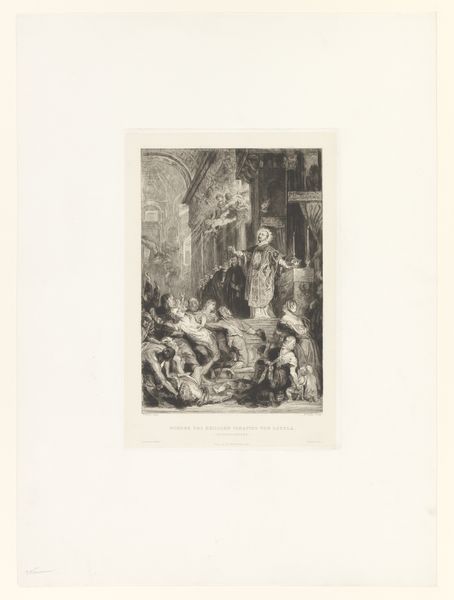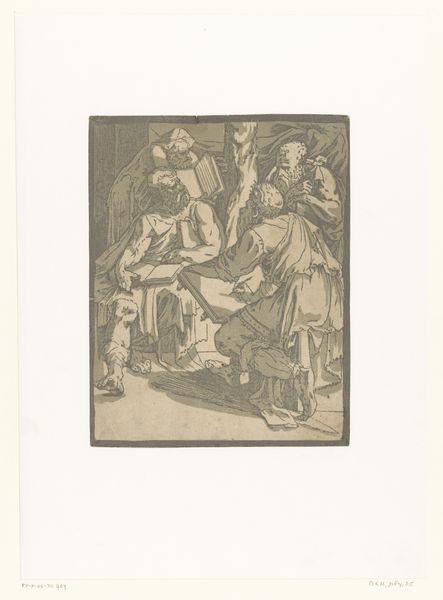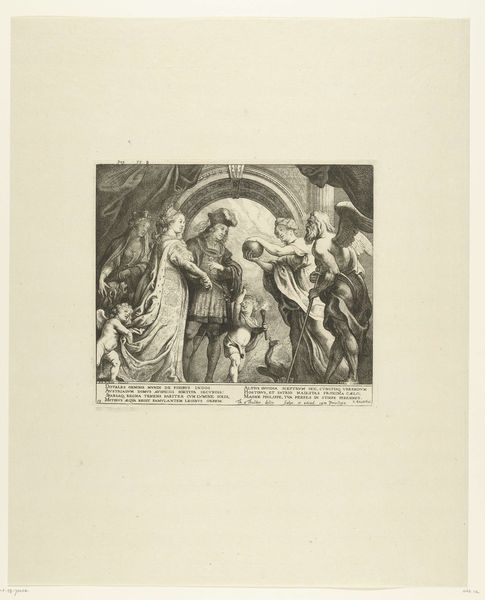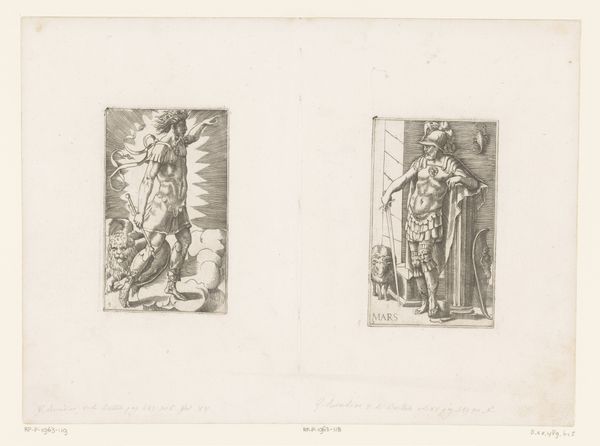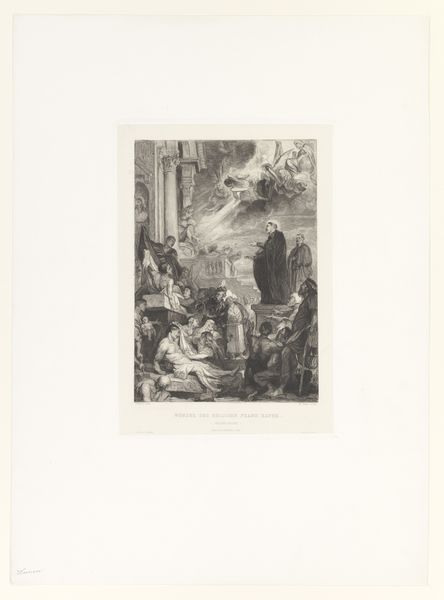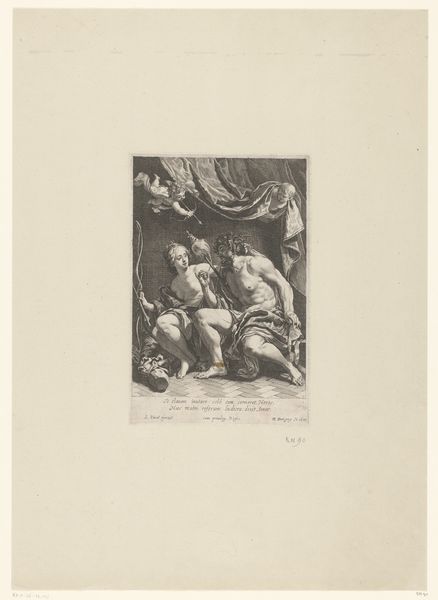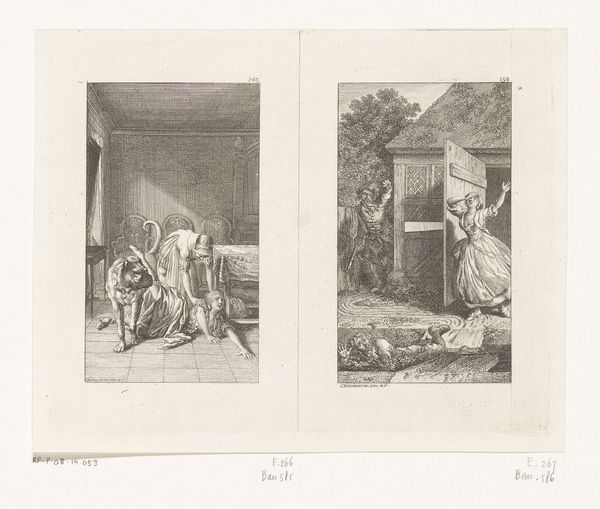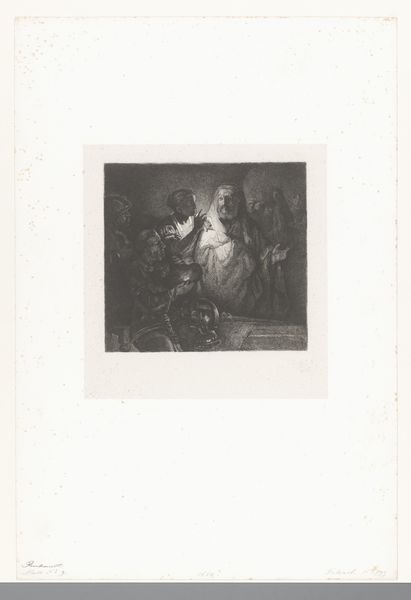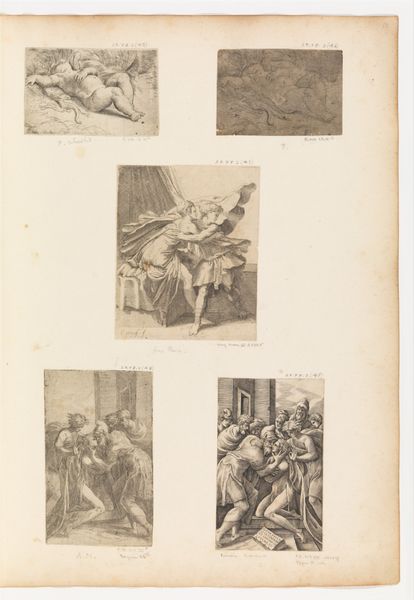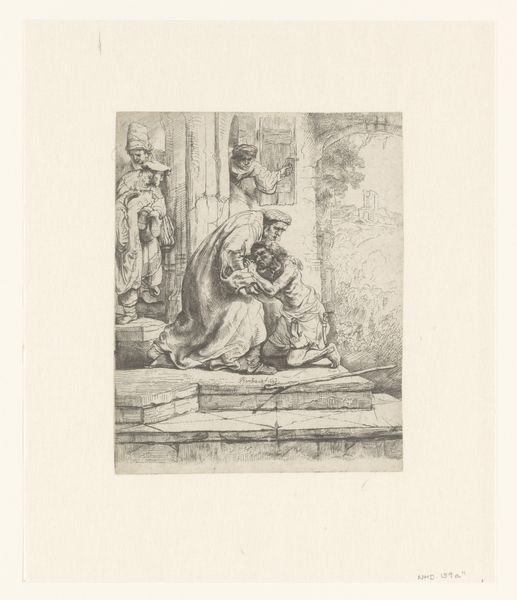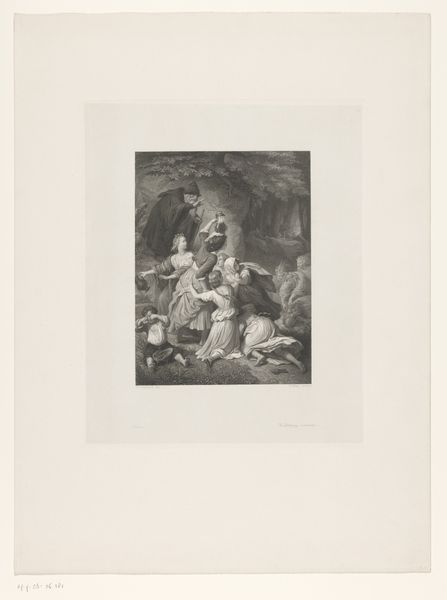
Dimensions: height 332 mm, width 254 mm
Copyright: Rijks Museum: Open Domain
Anthonie van Volkom created this print, Mijmerende advocaat en David en Saul, using lithography, a process that democratized image-making in the 19th century. Lithography involves drawing on a flat stone or metal plate with a greasy crayon, then treating the surface so that ink adheres only to the drawn areas, allowing multiple impressions to be made. The artist would have required skills in drawing, an understanding of the chemical processes involved in preparing the stone, and access to a specialized printing press. The medium lends itself to detailed tonal work, as we see in the fine lines and shading of the composition. Unlike earlier forms of printmaking, such as engraving, lithography allowed artists to reproduce their drawings with greater fidelity. Volkom's choice of lithography speaks to broader shifts in artistic production, where traditional hierarchies of skill and value were being challenged by new technologies. The relative ease and affordability of lithography made art more accessible to a wider audience, impacting artistic labor and consumption. Examining the materials and methods used is key to understanding the social and artistic context of this print.
Comments
No comments
Be the first to comment and join the conversation on the ultimate creative platform.
